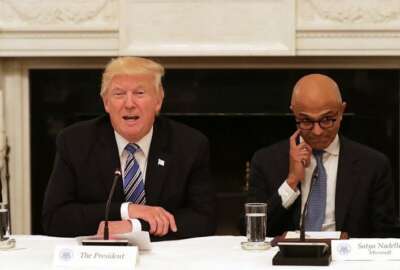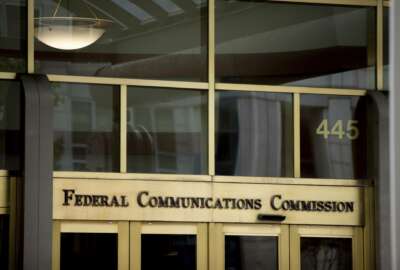
‘Technology refreshment’ a healthy alternative for agencies struggling with IT modernization stress
Cyber experts say the goal of agencies' modernization efforts should be to support the mission, not just updating technology for the sake of technology.
Forget baking in, avoid bolting on. When it comes to modernizing its IT systems, the federal government needs to get counting.
Curtis Levinson, NATO’s U.S. cyber defense adviser, told Federal News Radio the way for agencies to get a handle on updating their legacy systems is to first get hard numbers on what they have, then move to what they need and what they can afford to buy.
“The goal is not technology for the sake of technology,” Levinson said at a Sept. 14 Association for Federal Information Resources Management (AFFIRM) event in Washington, D.C. “The goal is to support the agency’s mission essential functions by enhancing technology.”
That might seem obvious on paper, Levinson said, but in practice, weighing modernization can be similar to the many people currently weighing whether or not to pay $1,000 for the newest iPhone.
It’s about taking inventory of your current phone, and weighing whether it’s doing its job, and if $1,000 — or whatever the difference is for what you paid for your previous phone — is worth the trade up for the features you’ll get with a new device.
That doesn’t mean agencies should simply leave unsupported technology in their systems to avoid spending money, Levinson said. There is also risk in taking on something new. But NATO seems to have found a happy medium.
“NATO has a big effort on the repurposing of aging infrastructure. There are warehouses and warehouses and warehouses full of stuff, and we’re looking at how can this be used maybe in a different way, maybe with some modifications can we change something,” Levinson said. “Can we use it for a purpose for other than which it was intended? Rather than having the luxury of being able to throw stuff out and replace it with new stuff, which is kind of what we tend to do here in the U.S., is we go through a cycle of technology refreshment, which means out with the old, in with the new, and we transition.”
International Trade Commission CIO Kirit Amin said he’s also applied that method to transitioning his legacy systems. While an agency could throw out all of its old systems and it would still fall under “modernizing,” doing a “systematic analysis” can be a better alternative for agencies.
“What we are doing, we have done a thorough analysis, we are systematically going, like for example I am going to address my storage first, then my antiquated backup systems,” Amin said. “And not only doing that but the way we are negotiating that with the vendors is that the next step is going to be that I can go to the cloud.”
Managing change
The transition from legacy to modern IT systems was just one change discussed at the AFFIRM event. Levinson and Amin also spoke about the administration transition and how it impacts their roles and efforts to modernize.
Amin said for ITC, there is the challenge of being both independent and having credibility with leadership.
“That’s where the first challenge lies,” Amin said. “You have a plan, you have to sell it with some credibility. Credibility comes not in one bite, but small gains.”
The second challenge for ITC comes from being an independent agency, Amin said.
“Not listening to OMB because ‘it doesn’t matter’ is a very dangerous slope,” Amin said. “When I first got there, they said … mandates don’t apply to us because we are independent. I went to the commission, I said to the board, ‘I have one question, and the answer is yes or no: Are we federal?’ Yes? Done deal, those apply to us, too.”
Levinson said transition means change, which is another word for stress.
“Transition is hard,” Levinson said. “We’ve acknowledged that no matter what we do, we are 10 years behind everyone else. At NATO, we’re all about building consensus. What I find myself doing is going office, to office, to office, saying ‘are you in?’ And by the time I make it all the way around, the first is saying ‘what were you talking about?'”
Levinson said there is a need to manage that change and stop playing catch-up.
“Change is stress, stress is a factor of budget,” Levinson. “You’ve got to budget for your stress. We have far too many instances of change managing you. We need to get out in front.”
Copyright © 2024 Federal News Network. All rights reserved. This website is not intended for users located within the European Economic Area.





